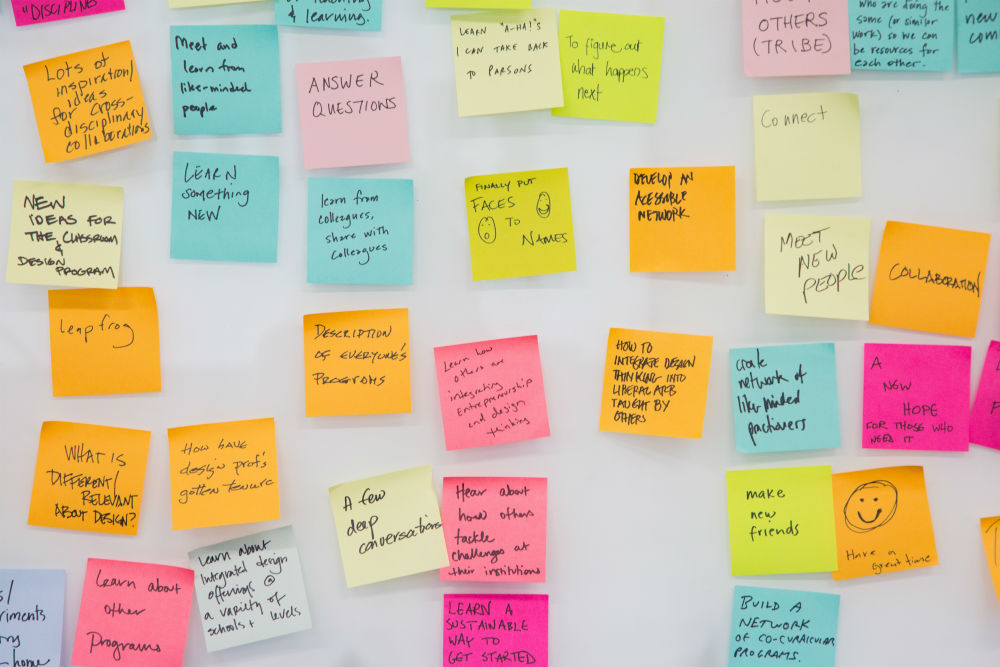by Julie Schell, Jan 20, 2021

How prepared are you to engage students in a discussion on controversial topics?
Open the virtual door to a college classroom anywhere now or 500 years ago, and you are likely to happen upon a conversation or discussion. Also known as “conversational learning,” discussion is designed to help students gain knowledge and skill through interacting in dialogue with their peers, instructors, and guests or visiting experts.
However, according to the Chronicle of Higher Education, when you open those classroom doors, you are unlikely to observe discussion covering difficult or controversial topics. Indeed, surveys of higher education faculty indicate that despite the prevalence of discussion-based pedagogy, instructors often find themselves underprepared to engage students in controversial conversations in the classroom.
The following 10 tips are drawn from educational research and learning science* and designed to help you facilitate discussion-based pedagogy on complex or difficult topics. I have organized these tips within into two overarching points of advice: first, ensure you have a pedagogical purpose for engaging in controversial topics and second, build a conversational learning community to help promote scholarly discourse.
HAVE A PEDAGOGICAL PURPOSE
 Make sure there is a pedagogical purpose for engaging in discussion, controversial or otherwise. You will be at your best when you engage students in active cognition about the course content, rather than just talking about controversy for controversy’s sake.
Make sure there is a pedagogical purpose for engaging in discussion, controversial or otherwise. You will be at your best when you engage students in active cognition about the course content, rather than just talking about controversy for controversy’s sake.
Carefully develop the specific learning outcomes you hope to achieve through the discussion, and make sure those are clear to students. When the conversation veers outside the stated outcomes (and it almost certainly will), use the learning outcomes to re-direct and help steer the conversation back. Modeling of this behavior (steering the conversation back to the center) is an excellent experience for students to observe in and of itself.
- Define the cognitive learning outcomes you want students to achieve as a result of participating in conversation or discussion.
Ideally, these outcomes will represent cognitive skills you use in your content area. Discussion should involve active learning, which requires students to pay attention to details, analyze and organize information, think and reason, and evaluate and judge information based on prior or experiential knowledge. What cognitive skills do you want students to develop? - Define the behavioral outcomes you want students to achieve as a result of participating in conversations.
Again, ideally, these are skills you use in your content area. Conversations can build listening, respect for others, empathy, patience, research, argumentation/persuasion, and other skills of civil discourse. What behavioral skills do you want students to develop? - Get “underneath the news” (Chronicle of Higher Education, 2021) with content that is related to your course.
Instead of opening with a prompt such as, “is Covid-19 real?”, open with prompts that help students think about the content of your course and develop the cognitive and behavioral outcomes that are important to you. For example, in a typography class, we might start with a prompt such as: “How are disinformation campaigns facilitated through graphic design?” - Do not assume students know how to engage in the cognitive and behavioral skills stated in your learning outcomes.
Do assume you will need to design discussion prompts and activities to help them build those skills. Be prepared, for example, to recognize when a student is weak in the skill of drawing on primary source evidence during a discussion and focus on helping them build that skill. Learning is a process and students may be completely unaware of how to engage in scholarly discourse.
BUILD A CONVERSATIONAL LEARNING COMMUNITY
Students are often reluctant to engage in discussion, even when it is not controversial. Reasons for resistance to conversation include not understanding the value of discussion, the fear of looking stupid, feeling a lack of belonging, and not trusting the learning community. Follow the below tips to help develop a conversational learning community in your classroom.
- Teach students the value of learning from conversation.
While conversation may be a frequent activity for your students, they may not be cognizant of just how integral conversation is to the human experience or how much they can and do learn from discussion in their everyday lives. Start with an individual activity where students write out a reflection on the variety and types of conversations and what, how, and why they might learn from conversations in their daily lives. Use the reflections as a starting point for developing class “rules of engagement” (see #6). - Define rules of engagement.
Develop a class activity whereby y’all, as a community, design and agree to guidelines for discourse. Include, and agree upon, a script for how the class (not a person) will respond when someone observes that the class may have neglected the rules. Consider modeling making such an observation for the class, so they have the courage to speak up later on. After you develop the rules, have students work in pairs to identify which of the rules may challenge them and which may be easy for them, and why. This will help bring awareness to the complexity of discourse and the tenet that you expect no one to be perfect. Ask everyone to help each other and to work on those rules that will be difficult for them. Do this activity before every significant discussion, or at the very least, revisit the rules of engagement frequently. - Educate yourself on the concepts of implicit bias and microaggressions (resources below).
Implicit bias and microaggressions are realities in classrooms. They will show up during discussions, and they can be harmful to facilitating a sense of belonging, trust, and, most importantly, your learning outcomes. Prepare yourself to recognize signs of both and do not leave it to students of non-majority groups to address bias during discussions. Often, when students resist speaking up or disengage during class discussions, implicit bias, microaggressions, and stereotype threat are present. - After discussion, ask students to complete an exit ticket or an assignment outside of class that continues their cognition about the content.
I like: What’s one thing you want to remember from the discussion we held today? Or: What’s one thing that you found difficult or interesting that we talked about today? - Give frequent feedback to students on their progress toward conversational/discussion-based learning outcomes.
One of the most potent instructional tools you can use to drive learning is process-based feedback. Process-based feedback is feedback that is focused on how and what students do (e.g. I found the way you drew on multiple sources for that argument helpful), rather than person-based feedback (e.g. I like Tina’s point). Provide frequent feedback during discussion and on written reflections to help students see what they should keep doing and what they should stop doing to advance toward your learning outcomes. - Be prepared for emotional reactions to sensitive topics.
When discussing sensitive issues, students (and others) are bound to have emotional responses. Normalize emotion and how to manage it effectively during scholarly discourse: carefully listening, awareness and reflection of your reactions and feelings, respectful disagreement with reasoning, and compromise where appropriate. Prepare for these situations with the rules of engagement noted above and develop a plan of action. For example, reserve the right to have students take a break or reflect on one thing they want to remember about the discussion if emotions are running high.
RECOMMENDED READING AND SOURCES USED TO PREPARE THIS LIST
- Teaching in the Age of Disinformation, Chronicle of Higher Education, 2021
- McKeachie’s Teaching Tips: Strategies, Research, and Theory for College and University Teachers, 2014
- Talking Across Divides, New York Times, 2016
- Racial Microaggressions in Everyday Life
- Disarming Racial Microaggressions: Microintervention Strategies for Targets, White Allies, and Bystanders
- Implicit Bias Introduction
- Implicit Bias Test



Leave a Reply